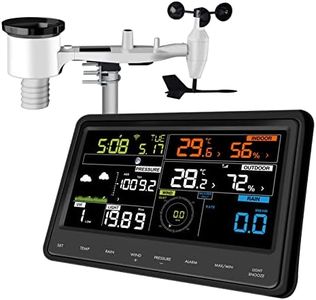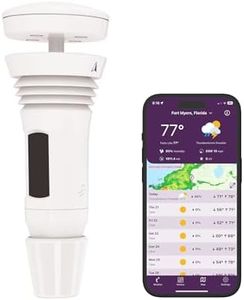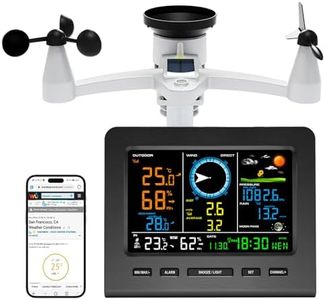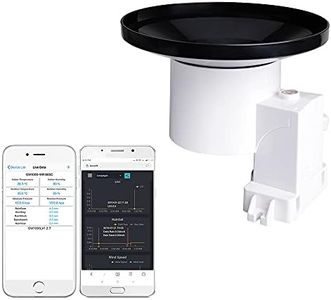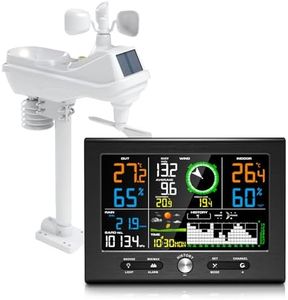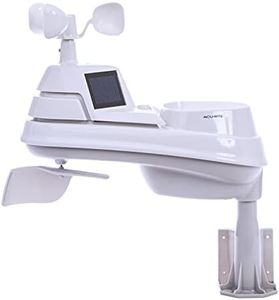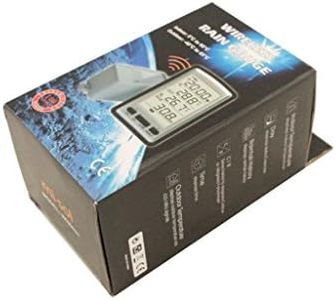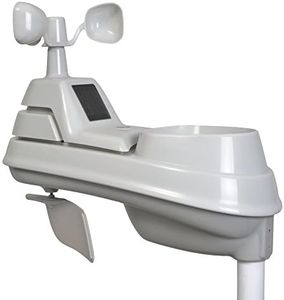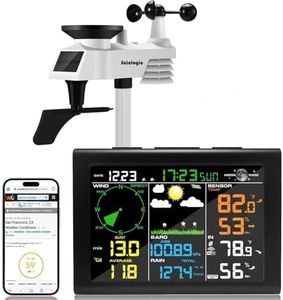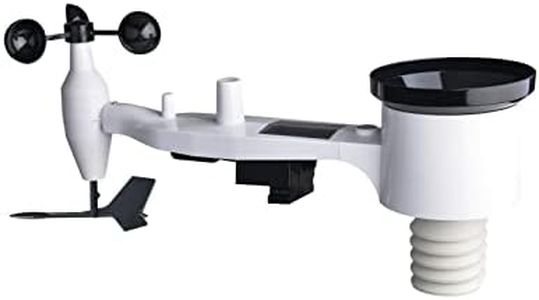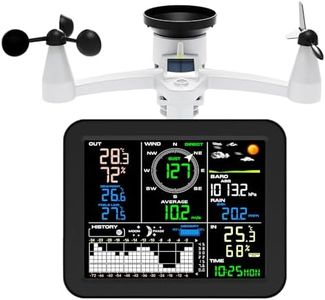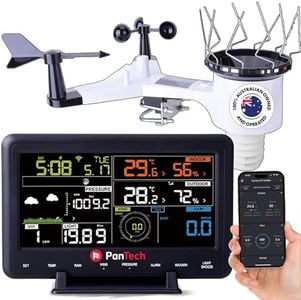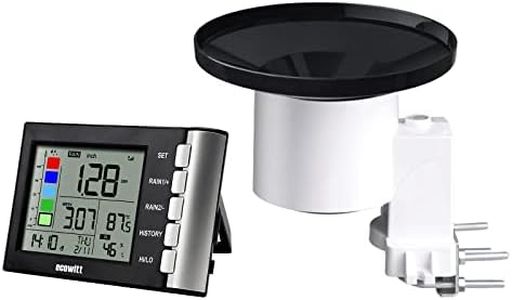We Use CookiesWe use cookies to enhance the security, performance,
functionality and for analytical and promotional activities. By continuing to browse this site you
are agreeing to our privacy policy
10 Best Wireless Rain Gauges
From leading brands and best sellers available on the web.Buying Guide for the Best Wireless Rain Gauges
When choosing a wireless rain gauge, you want a device that gives you dependable rainfall data with minimal hassle. Wireless models are great because you can place the measuring sensor outside while easily reading results from a display inside your home. Picking the best fit involves understanding what features matter most to your needs, the environment where it will be used, and how easy it is to set up and maintain. Consider how frequently you want updates, how you’ll use the information, and where you plan to install both the sensor and its display.Wireless RangeWireless range refers to how far the outdoor sensor can be placed from the indoor display or receiver. This is important because your sensor needs to be far enough from your house to get an accurate rainfall measurement, but close enough to communicate with the display. Ranges can be short (up to 50 meters), medium (50–100 meters), or long (100 meters and beyond). If your house has thick walls or you need to place the gauge far from the display, consider a longer range. If your display and sensor will be quite close, a short or medium range will likely be sufficient.
Measurement AccuracyThis spec tells you how precisely the rain gauge measures rainfall, often listed as the smallest measurable increment (like 0.1 mm or 0.01 inch). Higher accuracy means more detail in your readings, which is great for gardeners or weather enthusiasts. Lower accuracy may mean fewer details but is often sufficient for casual use. Decide how important strict measurement is for you—if you need data for gardening, weather records, or scientific hobbies, choose a model with higher accuracy.
Update FrequencyUpdate frequency is how often the rain gauge sends data from the sensor to the display. Some gauges update every minute, others every few minutes or even hourly. Fast updates are useful for tracking rainfall during storms, while slower updates might be enough if you only want periodic summaries. Think about whether you want real-time feedback or just daily/weekly totals to pick the right update frequency.
Display FeaturesThe display is your window into the gauge’s data. Some offer a simple rainfall readout, while others provide historical data, graphs, or even temperature readings. Features can range from basic single-day rainfall totals to detailed logs and alarms. If you like to track trends or need extra weather info, look for a more advanced display. If you just want to know how much it rained yesterday, a simpler display is fine.
Power Source and Battery LifeWireless rain gauges usually run on batteries, both in the sensor and sometimes in the display. Battery life can vary from several months to years. Some sensors use solar power with backup batteries. Longer battery life means less maintenance, but might come with fewer updates or features. Consider how often you want to change batteries or maintain the gauge when picking the power source that fits your lifestyle.
Ease of Installation and MaintenanceThis refers to how simple it is to set up your rain gauge and keep it working. Some models have clear mounts and are easy to install, while others may need more setup. Maintenance includes keeping the sensor clean and making sure nothing blocks the rain measurement. If you want a hassle-free experience, look for user-friendly features such as tool-free installation, clear instructions, and easily accessible parts for cleaning.
